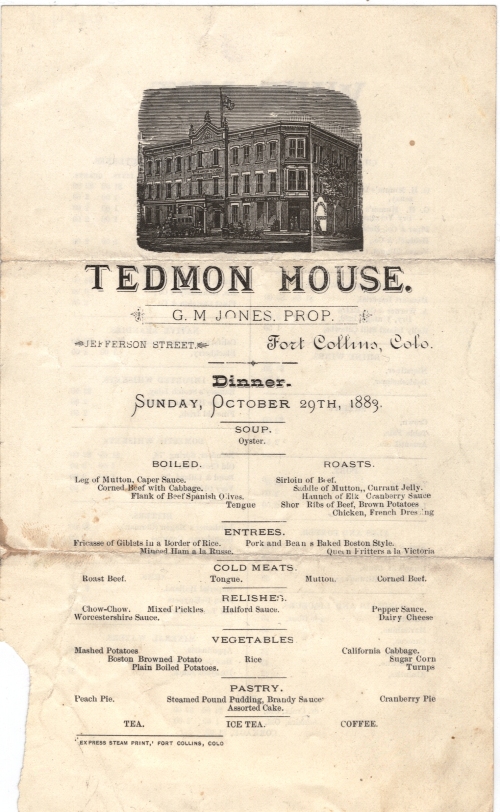by Ashley Houston, Collections Assistant
We have been finding all kinds of objects within our collection while we prepare for the move to the new museum. Unfortunately, the histories behind many of these objects are shrouded in mystery. Many of the materials come from the old Pioneer Museum and do not have very good records. Like many museums, they took in objects, displayed them, and then stored them away without writing about their history for future generations. This can lead to some very frustrated museum staff!
Some of the time, we get lucky and are able to recover quite a bit of information on objects, but other times we are left with a lot of unanswered questions. A few months ago, I was going through some boxes of archival materials (mostly old letters, newspapers, etc.) when I pulled out an envelope that had some bulky objects inside. I opened it up and out slid an old knife and a piece of a rope! With these objects were an old museum label and two newspaper articles. The rope, it is said, was from Fort Collins’ only lynching. The knife…well, that’s one of those unanswered questions. In faded black ink, written on the blade, is “Thomas H. Davy, Sheriff” along with “April 4, 1888.”

The Story of the Howe Lynching
James Henry Howe was married to Eva Schuyler. James was known to drink a lot and often took out his aggression on his wife. According to newspapers, on April 3, 1888, James came home and assaulted his wife. Eva called the police, but refused to have him arrested. The next morning, James left the house. Eva dropped their 5-year old daughter Gertie off at a neighbor’s house, then returned home and began packing and making arrangements to leave him.
Before she could finish, James returned home. According to a neighbor’s sworn statement, Eva cried out “Murder!” before she fell to her hands and knees through the front door. James then cut her under the left side of her jaw. She got up, cried “Murder!” again before finally collapsing. By this time, other witnesses arrived and a doctor was summoned, but by the time the doctor arrived Eva was dead.
When the police took James into custody he claimed that “She has cut her own throat and tried to cut mine.” He did have two shallow cuts on his neck, but as to who started the fight, the answer was never found. Eva ended up with cuts on both sides of her neck, one on the palm of her left hand, one on the back of her right hand, and a bruise on her right knee. At 8 p.m. the lights in the city were cut and a mob formed at the jail. The mob took him outside to the courthouse and hung him. Both James and Eva were brought to Grandview cemetery to be buried next to each other. You won’t find their headstones though, if you attempt to look because they do not have any. As to why that is the case, one can only guess. The Howes had money. In fact, the account of their burial states that they were buried in “beautiful dark mahogany caskets.”
As for the knife and rope that we have…According to the old label, the knife belonged to the Sheriff, but why does it have the date that James Henry Howe was lynched written on it? Other than the fact that Davy was the Sheriff at the time, the knife does not seem to make a lot of sense. It is not the murder weapon (the terrifying thought that first crossed my mind) – the knife James used was a lot smaller. Next I thought perhaps it was the knife that was used to cut James down, but according to the newspapers the coroner was the one to do that. So at this point, it remains an unsolved mystery.
As for the rope, the old label said that it belonged to Thomas Pendergast. A Thomas Pendergast was living in Fort Collins at the beginning of the 1900s, so it’s possible he was there at the time of the lynching and kept a piece of the rope as a grisly souvenir. The rope also has a faded blue silk ribbon tied around one end that reads “Reina Victoria.” As it turns out this piece of fabric looks like ribbon that once was used to tie cigars together, and cigar ribbons like these date to around the same time period as the lynching. Both of these artifacts seem to be from the time period of the lynching and so therefore could actually be artifacts from the event.
Next week we’ll publish part 2 of this blog — “Finding the Trail of the Howe Lynching”






































You must be logged in to post a comment.